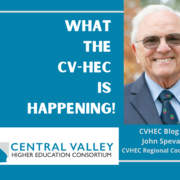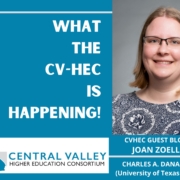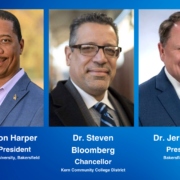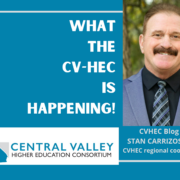In the “What the CV-HEC is Happening” Blog for our summer 2024 special edition, Dr. John Spevak presents an observation about the value of a higher education. Dr. Spevak, […]
Tag Archive for: Blog
This month’s “What The CV-HEC Is Happening” guest blog is presented by Joan Zoellner, M.A., Launch Years Initiative lead for the Charles A. Dana Center (University of Texas at Austin), co-facilitators of the CVHEC […]
This month’s “What The CV-HEC Is Happening” Blog takes a unique look at an unprecedented wave of leadership at five major Kern County education institutions: California State University, Bakersfield; Kern […]
To kick off our 2024 “What the CV-HEC is Happening” Blogs, CVHEC Regional Coordinator Stan Carrizosa, Sr. follows up the year-in-review published in our December newsletter issue by offering a […]





